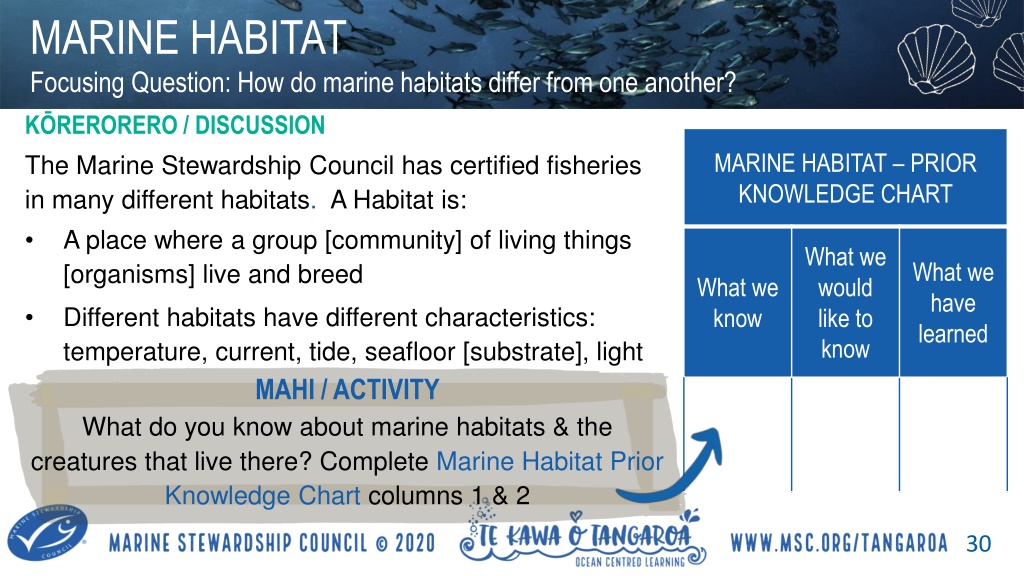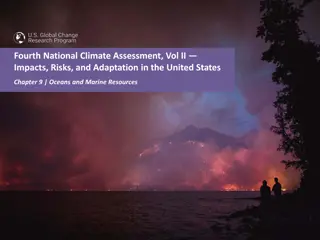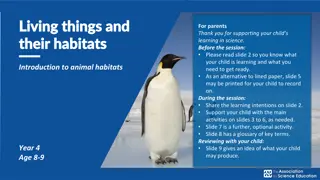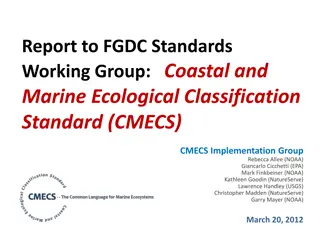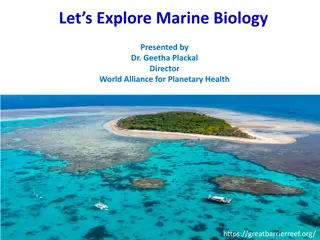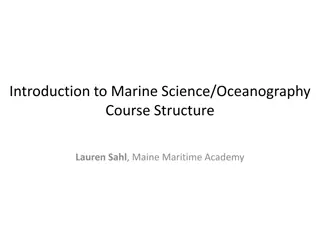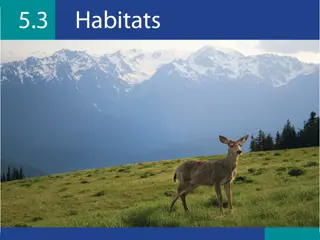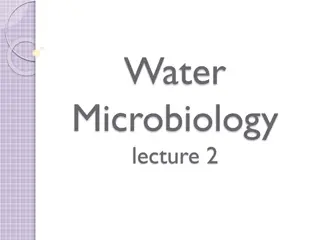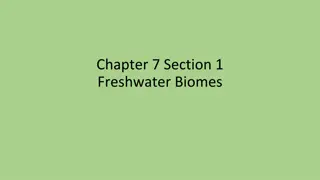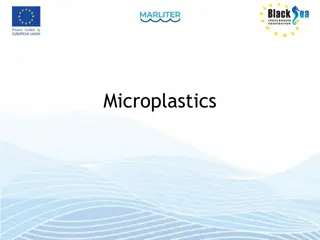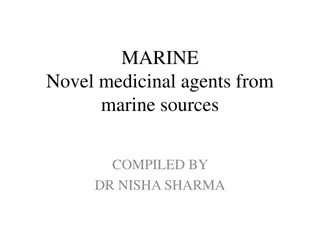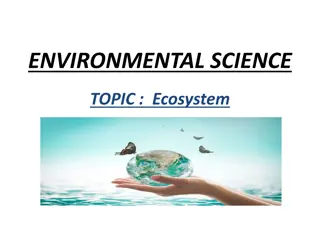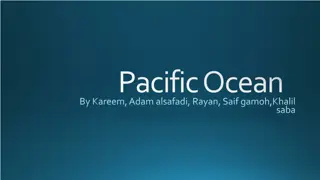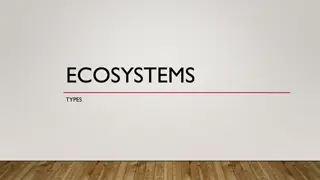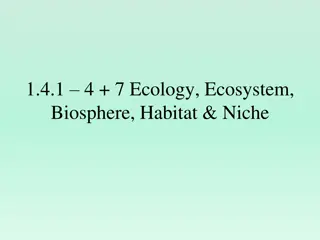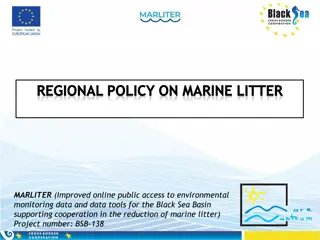Understanding Marine Habitats and Their Diverse Ecosystems
Marine habitats vary in characteristics such as temperature, current, tide, seafloor substrate, and light, influencing the communities of organisms that live within them. The certification of fisheries by the Marine Stewardship Council ensures minimal impact on local habitats, emphasizing the importance of maintaining the delicate balance within these ecosystems. Different types of marine habitats include open water, sandy/muddy bottoms, and rocky/coral bottoms, each supporting a unique array of life forms. Exploring these habitats through virtual expeditions and educational activities can enhance our understanding of marine biodiversity and conservation efforts.
- Marine ecosystems
- Marine habitats
- Marine biodiversity
- Conservation efforts
- Marine Stewardship Council
Download Presentation

Please find below an Image/Link to download the presentation.
The content on the website is provided AS IS for your information and personal use only. It may not be sold, licensed, or shared on other websites without obtaining consent from the author. Download presentation by click this link. If you encounter any issues during the download, it is possible that the publisher has removed the file from their server.
E N D
Presentation Transcript
MARINE HABITAT Focusing Question: How do marine habitats differ from one another? K RERORERO / DISCUSSION The Marine Stewardship Council has certified fisheries in many different habitats. A Habitat is: A place where a group [community] of living things [organisms] live and breed MARINE HABITAT PRIOR KNOWLEDGE CHART What we would like to know What we have learned What we know Different habitats have different characteristics: temperature, current, tide, seafloor [substrate], light MAHI / ACTIVITY What do you know about marine habitats & the creatures that live there? Complete Marine Habitat Prior Knowledge Chart columns 1 & 2 30
MARINE HABITAT Most Marine Stewardship Council certified fisheries are in open water and sandy bottom habitats! K RERORERO / DISCUSSION Habitats are really made by physical things such as light, depth, pressure, bottom type [substrate], temperature These physical things then create an environment for a community of creatures, plants, algae to live Main ocean habitat types are: 1.Open water (very large) 2.Soft sandy to muddy bottom (large) 3.Hard (rocky, coral) bottom (small area but has the most diversity / variety of life) 31
MARINE HABITAT K RERORERO / DISCUSSION Fisheries certified by the Marine Stewardship Council have been assessed to ensure impacts on local habitats are minimised Within each of the main habitat types there are many smaller habitats Every habitat is home to many types of organisms [living things] HE P TAI / CONSIDER THIS Look carefully! Is the starfish the only living thing in this tiny patch of rocky reef habitat? 32
MARINE HABITAT M TAKI T NEI / WATCH THIS MAHI / ACTIVITY Visit our partner organisation The National Aquarium of New Zealand click on Deep Sea Exploration. Watch the film [1:30] and have a go at the activity! Just for fun! Check out The Deep Sea Screen Shot 2020-08-19 at 4.53.50 PM.png by Neal Agarwal! Screen Shot 2020-08-19 at 3.45.57 PM.png Play the true false card game and the matching game (see Habitat Cards or Teacher Outline) 33
MARINE HABITAT M TAKI T NEI / WATCH THIS K RERORERO / DISCUSSION Watch the kina barren 360 VR videos and take on the task of being a virtual marine biologist. Record your observations from each virtual expedition! Scientists now believe that reduced numbers of fish (such as T mure or Snapper) is how kina [sea urchin] barrens are created T mure / Snapper eat kina [sea urchins] who eat seaweed [kelp] Less T mure / Snapper has resulted in more kina and less kelp 34
He kura kainga te moana, he kura huna te moana The oceans environment, is a source of untapped knowledge 35
